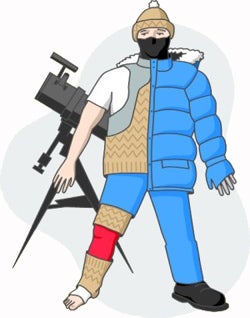Being prepared doesn’t mean just owning the right equipment. It means having what you need at hand for that which you did not expect. So my first tip is to overpack. In the most improbable situation, having a certain item along could literally be the difference between life and death.
Purchase the warmest boots that allow you to drive a vehicle. I usually change into and out of my cold-weather boots at the observing site, but you never can tell what might happen. You may be required to drive to a new location without the time to change footwear. Choose boots that are comfortable, not very heavy, and have a thick, insulated lining in the sole to prevent heat transfer downward.
Bring hand warmers, and bring extras. Warmers are superb when working but notorious for not lasting the full time specified on the package. Keep active warmers in your side pockets. Slip them in and out of your gloves or mittens for a quick warm-up.
Finally, dress in layers. I generally wear fleece long underwear and thick pants. My upper body is covered with a T-shirt, a thin, long-sleeved, flannel shirt, a fleece pullover, and a down jacket. My wife, who is affected by the cold to a much greater extent than I am, wears a ski-rescue suit as her outer layer. When fully zipped with the hood up and boots and gloves in place, the wind has few places to chill her delicate frame.










